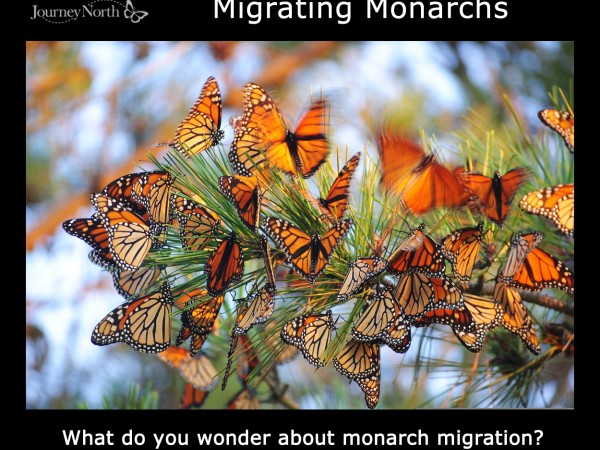Signs of Fall Migration
Monarchs are changing dramatically in the fall, in physiology and in behavior. They are:
1. Becoming Migratory
Watch for signs of migratory monarchs:
- flying in directional flight
- clustering in overnight roosts
- nectaring intensely
2. Responding to Daylength
Declining day length is a central cue that triggers the monarch's migratory state. In the northern breeding range photoperiod is falling by 20 minutes by mid-August. This sends a signal that it's time to migrate.
3. Emerging in Diapause
Beginning in mid-August in the north, adults are in diapause when they emerge from the chrysalis. They are full grown — but they are not reproductively mature. Their reproductive development is on pause. These monarchs will not complete development and begin to mate until next spring in Mexico.
4. Beginning a Long Life
The same hormone deficiency that leads to diapause also leads to increased longevity. Breeding monarchs live only 2-6 weeks; migratory monarchs live up to 8 months.
5. Accumulating Fat
Monarchs are shifting focus now from breeding to intense feeding. They must build body fat to fuel migration and to survive the winter in Mexico.




